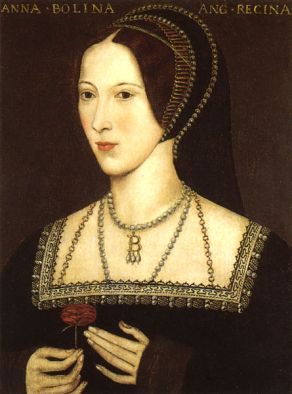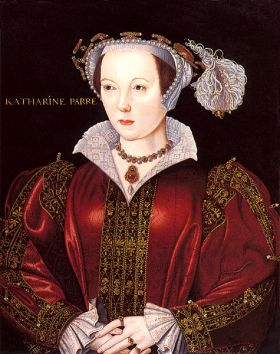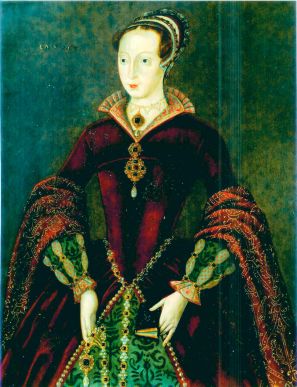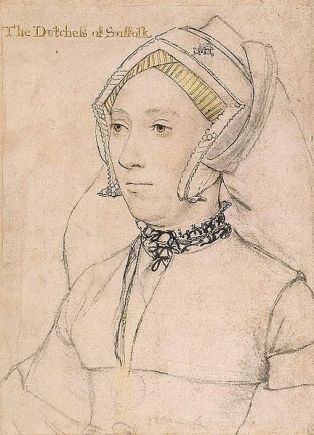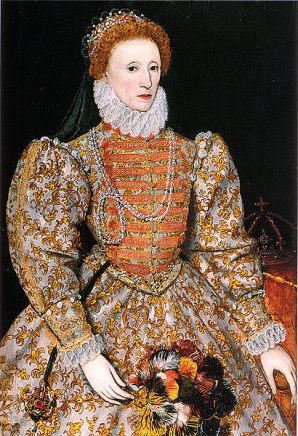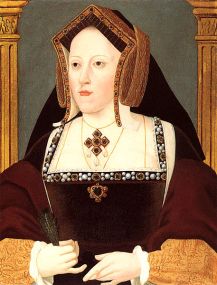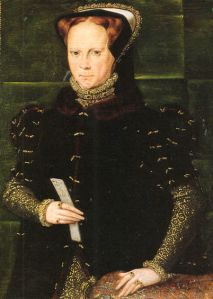REFORMATION and The Tudor Women
Jump to navigation
Jump to search
Tudor Women who influenced the Reformation despite living in a Patriarchal society where women were considered chattels and subordinate to men |
" Our biggest enemy is terrorism," says Charles Beem, (aka <a href="../account/tudorhistorian" target="_self" title="tudorhistorian">tudorhistorian</a> on the wiki) an historian at the University of North Carolina at Pembroke. "Theirs was the Reformation. You can't overestimate how traumatic the changes in the church would have been." You might get close if you imagined that Monica Lewinsky had been a radical Islamist and Bill Clinton married her and made everyone convert. - Time Magazine - Mar. 22, 2007 "When Royals Become Rock Stars" By Rebecca Winters Keegan |
The "Nursing Mothers" of The Reformation These are women who played important roles in supporting the tenets of the Protestant Reformation in England |
There were several socially prominent and well-educated women who dedicated a great deal of time and attention to the major theological concerns of the sixteenth century. Each in her own fashion zealously supported the Reformation to the point of torture, exile, or martyrdom. Dedicated to promulgating the reformed religion, each attempted to overcome the widespread opposition to their cause. All of these young women were intensely interested in the religious concerns of their day and all but Anne Boleyn left behind a considerable body of written work. Each woman bears witness to her gender as it relates to theology and motivation. The personalities of these women, who spoke their Christian convictions with presence of mind and sharp intelligence within situations of life-and-death duress, are almost totemic in our enduring search for role models. "All of these woman thought theologically, they were lay theologians. They read theological books, most especially the Bible, and anything to which they could gain access from the continental Protestant Reformers. They talked theology. Their inner circles were twenty-four-hours-a-day Bible studies. They saw everything that happened through two lenses: the lens of the providence of God and the lens of the furtherance of the Reformed religion." ~ Author Dean Paul F.M. Zahl in his book <a class="external" href="http://www.amazon.com/Five-Women-English-Reformation-Paul/dp/0802830455" rel="nofollow" target="_blank" title="'Five Women of the Reformation'">'Five Women of the Reformation'</a>. In his book he states that Anne Boleyn, Anne Askew, Catherine Parr, Jane Grey, and Catherine Brandon nee Willoughby “muscularly and monocularly” strove for the furtherance of the Reformed faith in their nation. |
The First Phase - justification by grace through faith rediscovered |
| Anne Boleyn (1507-1536) introduced the Reformation to England, and Catherine Parr (1514-1548) saved it. 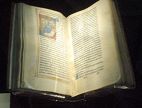 Both women were riveted by early versions of the * "justification by faith" doctrine (rather than by good works which threatened the whole basis of the Catholic penitential system with its endowed masses and prayers for the dead as well as its doctrine of purgatory. Neither pious acts, nor prayers nor masses, on this view, can secure the grace of God; only faith) that originated with *Martin Luther and came to them through France. Anne had an impressive theological library, supported *William Tyndale, and 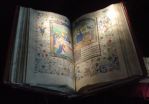 in part was beheaded for her Reformed convictions. Zahl says Anne Boleyn, "died meekly but gave away nothing." So completely was she erased from the official record "it became as if she had never lived." However, she left the indelible mark of her faith. As queen, Anne understood her providential mission to be...to bring the Reformation to England and employ every single instance of patronage and influence to that end." in part was beheaded for her Reformed convictions. Zahl says Anne Boleyn, "died meekly but gave away nothing." So completely was she erased from the official record "it became as if she had never lived." However, she left the indelible mark of her faith. As queen, Anne understood her providential mission to be...to bring the Reformation to England and employ every single instance of patronage and influence to that end." While in France, Anne Boleyn had been lady-in-waiting to Queen Claude. It was there that she had made the acquaintance of Princess Marguerite of Navarre. As a patron of humanists and an author in her own right, it was she who encouraged Anne's interest in poetry and literature. She gave Anne the original manuscript of Miroir de l'âme pécheresse. Later Anne's daughter, Princess Elizabeth Tudor —who would become Queen Elizabeth I — at age twelve, translated this very same poem by Marguerite into English, written in her own hand, to her then-stepmother, Queen Catherine Parr. This literary connection among Marguerite, Anne Boleyn, Catherine Parr, and the future Queen Elizabeth I suggests a direct mentoring link between the legacy of reformist religious convictions and Marguerite of Navarre. Catherine Parr wrote a remarkable devotional book entitled Lamentation of a Sinner and narrowly 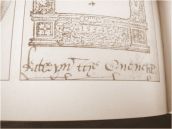 avoided execution, surviving Henry."Shall I fall in desperation?" Catherine asked "Nay, I will call upon Christ, the Light of the world. The Fountain of life, the relief of all careful consciences, the Peacemaker between God and man, and the only health and comfort of all repentant sinners." avoided execution, surviving Henry."Shall I fall in desperation?" Catherine asked "Nay, I will call upon Christ, the Light of the world. The Fountain of life, the relief of all careful consciences, the Peacemaker between God and man, and the only health and comfort of all repentant sinners."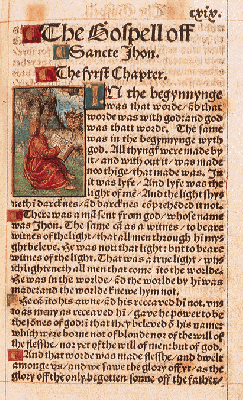 * William Tyndale's Old and New Testaments were the first English translation of the scripture taken directly form the original Hebrew and Greek languages. They remain the basis of most mainstream English language Bibles. Tyndale's 1526 New Testament was the first ever printed in English. In the 1530's he also translated the first fourteen books of the Old Testament. He thus became the first man to translate anything from Hebrew into English as Hebrew was virtually unknown in England at that time. |
The Second Phase - the implications of justification by faith for the Mass, the Mass being the central action and transaction of medieval Catholicism |
|
| The Third Phase - focus on election and predestination |
|
| |
| The Elizabethan Religious Settlement - "The Revolution of 1559" |
|
Tudor Women who also had their part, however unwittingly in the rise of the Reformation |
|
|
